Changing course
A flight path flying over a firing range, earmarked for planes using the proposed third runway, has been canned. In a volte-face, the government has changed its course of action and will avoid flying over Danger Zone 5. Here is South China Morning Post’s updated graphic, as of April 30, on one of the many issues overshadowing one of Asia’s most congested international airports.
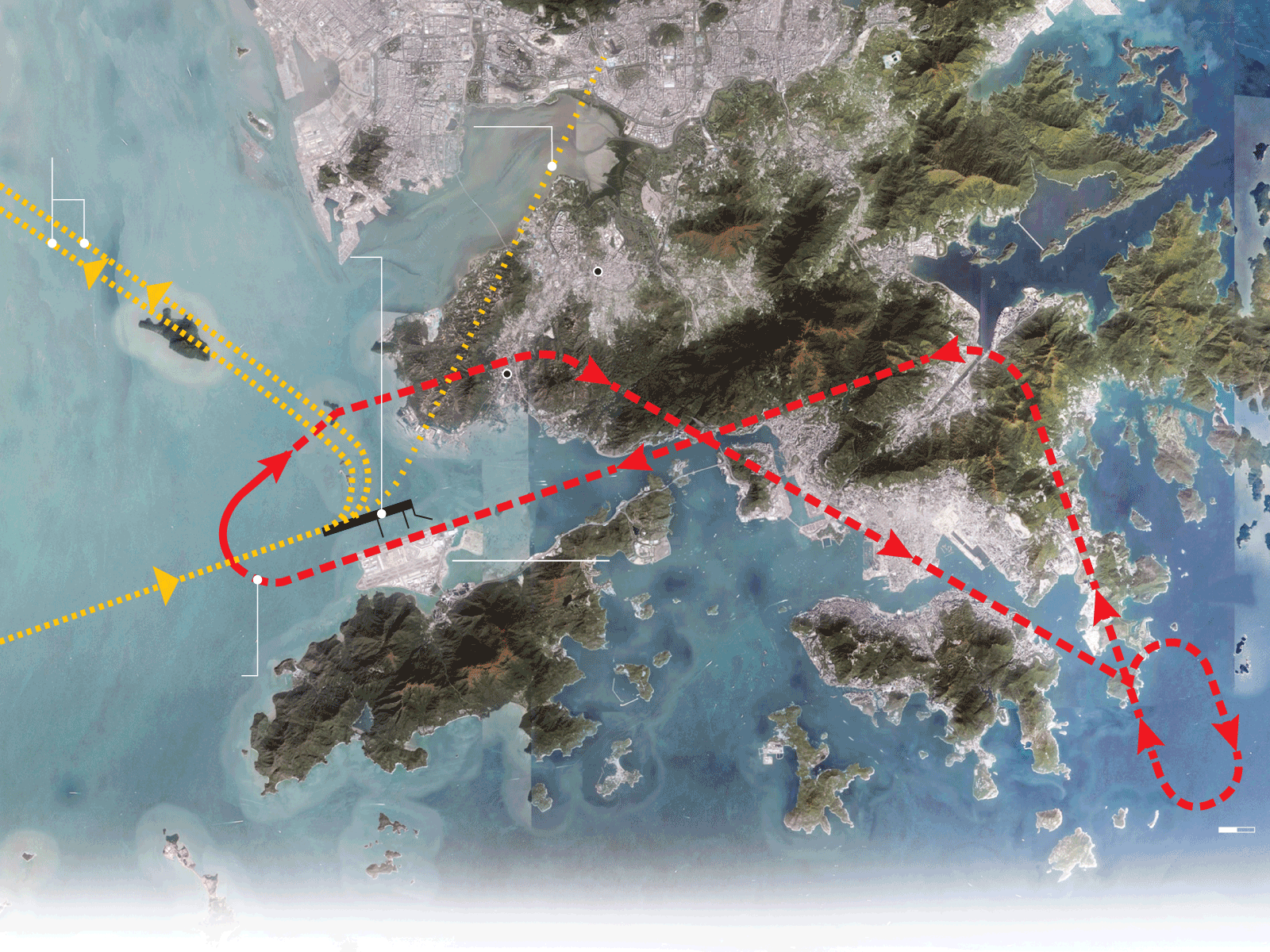
Shenzhen
Two identical escape routes for jets on third runway proposed by British airport consultants.
Original escape route through Danger Zone 5
Yuen Long
Proposed
third runway
and extension
New Territories
Tuen Mun
Kowloon
Hong Kong International Airport
Hong Kong Island
Lantau Island
Current north runway landing and missed-approach flight path over Danger Zone 5
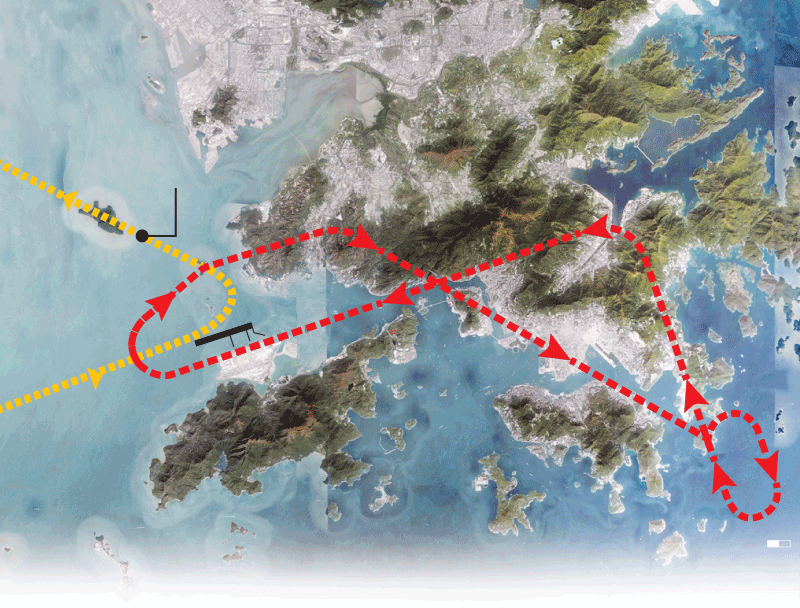
Shenzhen
Two identical escape routes for jets on third runway proposed by British airport consultants
New Territories
Kowloon
Lantau Island
Hong Kong
Island
2km
Flying into trouble
Further doubts have been cast on the running of Chek Lap Kok airport's proposed third runway, after the Civil Aviation Department said it would abandon a key flight path planned for aborted aircraft landings on the strip.
Routing planes over a firing range used by the People's Liberation Army and police in Castle Peak, Tuen Mun, situated under the proposed missed-approach route, proved too challenging. The department announced on Monday it had given up on this route - recommended by its British consultants - due to "technical issues".
In a statement, Hong Kong's aviation regulator said: "Since the implementation of this flying procedure poses technological limitations to flight operations, such as on the requirement on the climb gradient, the Civil Aviation Department earlier decided not to adopt this procedure."
With the route over the firing range eliminated, it leaves only two possible alternative diversionary routes for planes, but they fly head-on into the path of arriving flights at Shenzhen Airport.
Negative outlook
With limited options to route planes safely, Hong Kong’s aviation chiefs are making a big “gamble”.
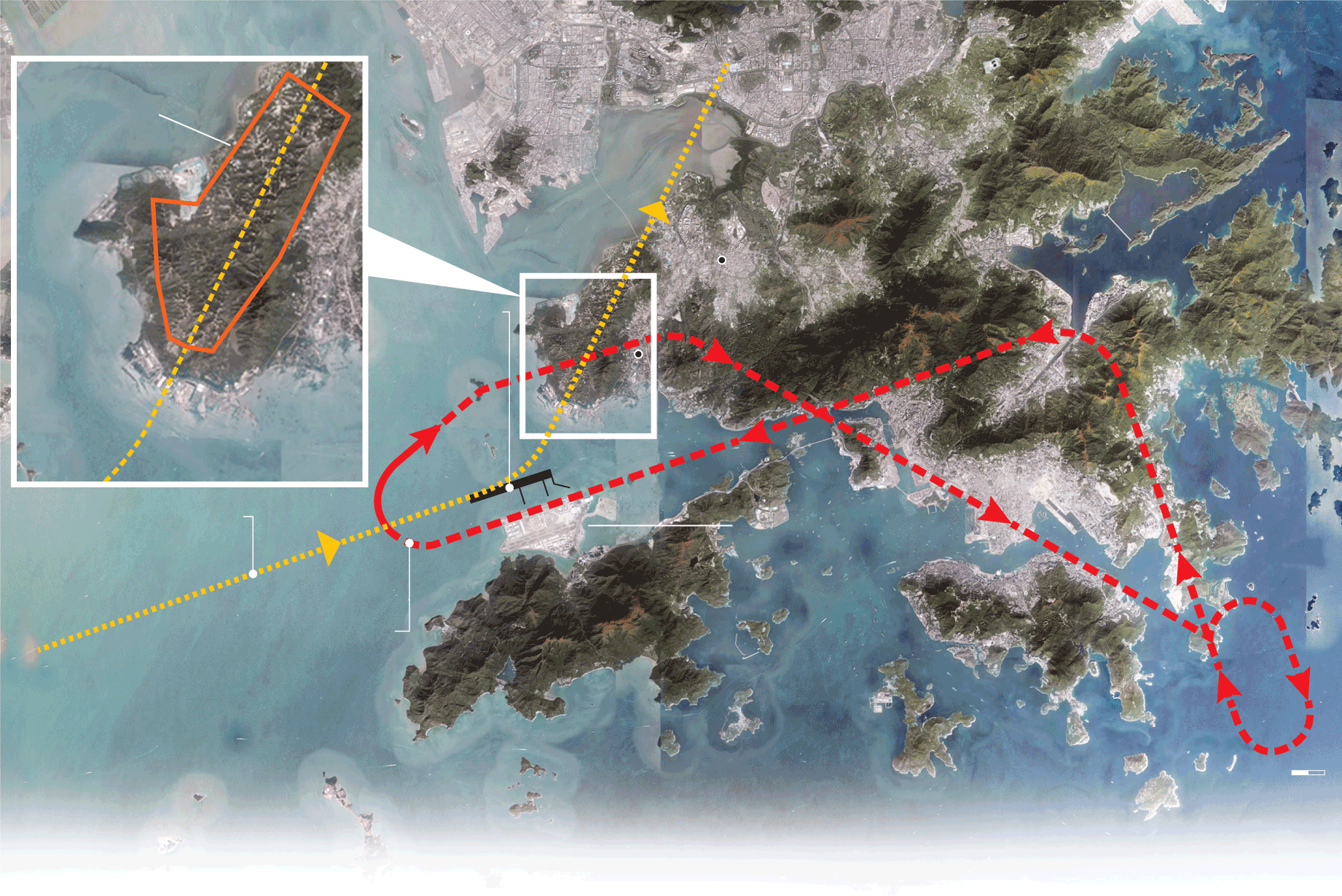
Shenzhen
Danger zone (PLA firing range)
Castle Peak
Yuen Long
New Territories
Proposed
third runway
and extension
Tuen Mun
Kowloon
Recommended escape route for jets on third runway
Hong Kong International Airport
Hong Kong Island
Lantau Island
Current north runway landing and missed-approach flight path over Danger Zone 5
2km

Shenzhen
Recommended escape route for jets on third runway
New Territories
Kowloon
Lantau Island
Hong Kong
Island
Proposed
third runway
and extension
Current north runway landing and missed-approach flight path over Danger Zone 5
2km
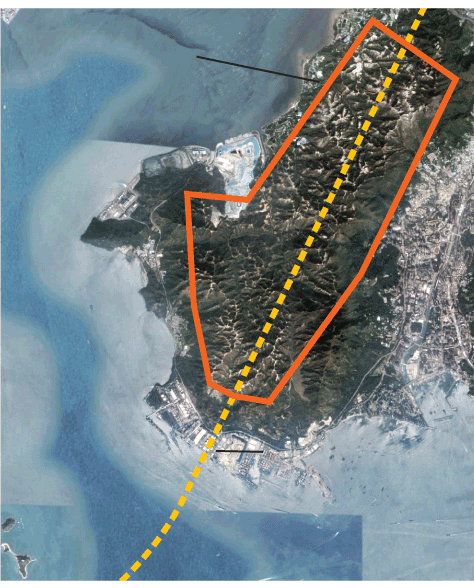
Danger zone (PLA firing range)
Castle Peak
Recommended escape route for jets on third runway
Former aviation department chief Albert Lam Kwong-yu said that to enter Shenzhen's airspace, the department "must have agreement and consult its authorities".
Michael Mo Kwan-tai, the spokesman for the Airport Development Concern Network, said: "The CAD has taken a huge gamble in assuming the Shenzhen authorities would give way to missed-approach aircraft in order to give maximum capacity to the three-runway system. If Shenzhen will not give way, or in any circumstance the Pearl River Delta integration plan does not include approval of this U-turn missed approach, the third runway will be screwed up.”
He previously said the newly created missed-approach flight path "is clearly very close to" to the Danger Zone . "The broadcast tower would become a threat if the firing zone isn't relocated," Mo said, because planes would have to avoid two major obstructions in close proximity. NATS said the tower would need to be removed.
A senior air traffic controller in Hong Kong, unable to speak publicly by his employer, had warned how he couldn't see “how the firing range survives”. The Hong Kong Airline Pilots Association warned that older aircraft were not capable of such manoeuvres. The PLA did not respond to repeated requests for comment.
Consultants carved out the escape route after assuming airspace would be merged with the Pearl River Delta and the firing range would be deactivated.
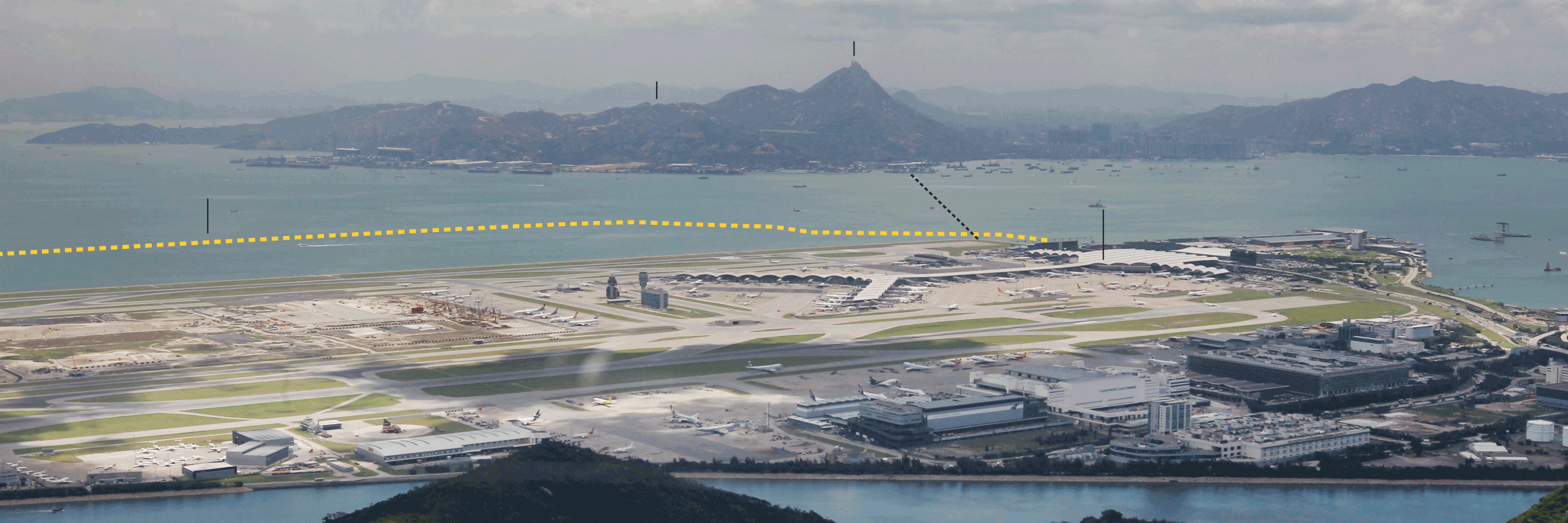
Castle Peak
PLA firing range (Danger Zone 5)
Hong Kong International Airport Terminal 1
Future third runway
4km
North runway
South runway
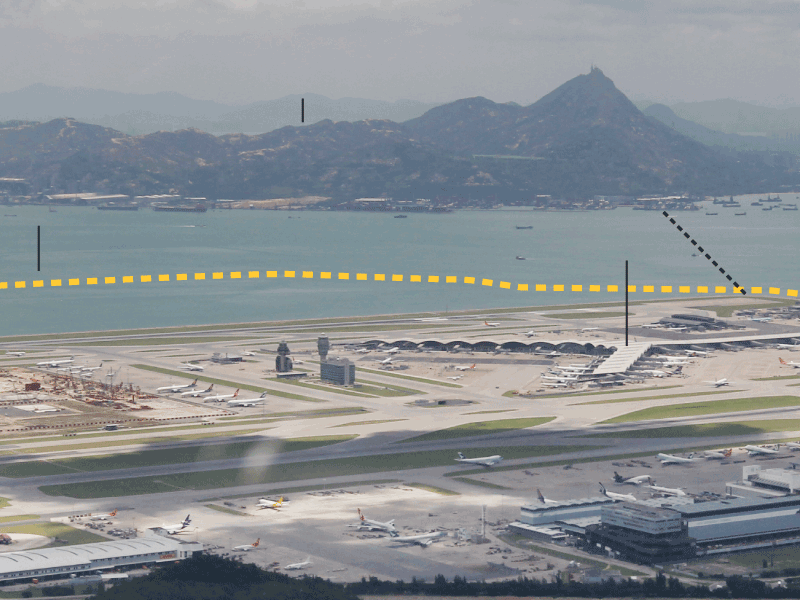
PLA firing range (Danger Zone 5)
Castle Peak
Hong Kong International Airport Terminal 1
Future third runway
4km
North runway
South runway
Plan to route plans over the firing range won’t fly
Around 10 kilometres north of Chek Lap Kok near Tuen Mun lies Castle Peak. It is a vast area of greenbelt land in the northwest New Territories, one of the few undeveloped areas of land in Hong Kong not classified as a country park nor earmarked for development.
This land contains the site of a vast firing range used by China’s People’s Liberation Army and the Hong Kong police. The site is so active that aircraft overhead cannot fly below 914 metres. Security exercises take place every Monday to Friday throughout the year here, one of the remotest and most deserted areas of the city.
A flight path for jets aborting landings on the proposed third runway sits in the crosshairs of this no-fly zone. The firing activity poses a hazard to planes. A plane approaching the runway needs a certain amount of airspace in case it needs to abort the landing at the last minute. Planes will have to climb much steeper to avoid the no-fly zone, increasing the risk of the manoeuvre.
Frequent firing by troops at the Castle Peak site threatens to reduce such airspace and limit the number of planes that can land. The distance gives commercial jets clear altitude to avoid the ammunition firing and Castle Peak itself – which stands 583 metres high. Atop of that is a broadcast tower for television satellites which stretches up to 590 metres. These three things are a problem for the third runway, say the government’s airport consultants, and now Hong Kong’s Civil Aviation Department has agreed with its experts.
Almost all of the airspace above Castle Peak sits within restricted airspace. It’s officially known as “Danger Zone Five”. Pilots are expected to navigate a narrow flight path that can fly high enough to reach at least 914 metres before entering the danger zone to avoid the terrain and the flight restrictions. In a worst-case scenario, aircraft aborting a landing would enter the firing range at a height as low as 526 metres.
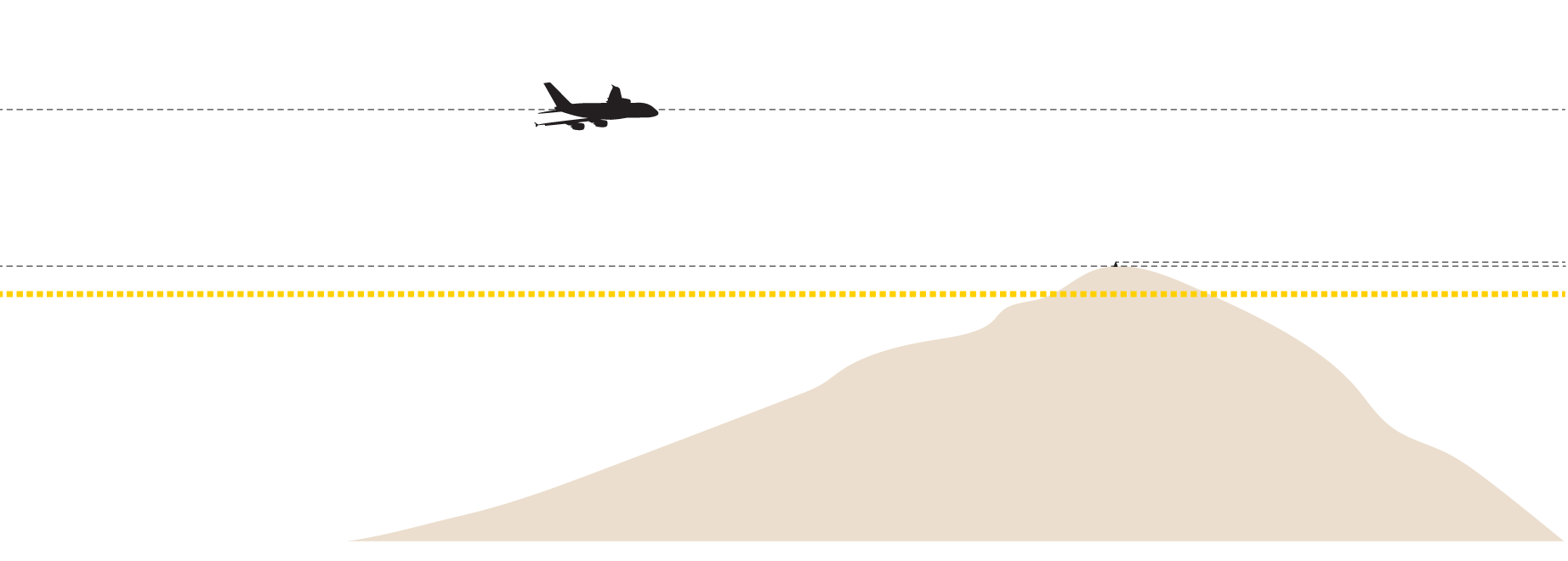
Minimum flight altitude to avoid strict rules flying over firing range: 914m
Broadcast tower: 590m
Castle Peak: 583m
Projected low-flying aborted jet over Danger Zone 5: 526m
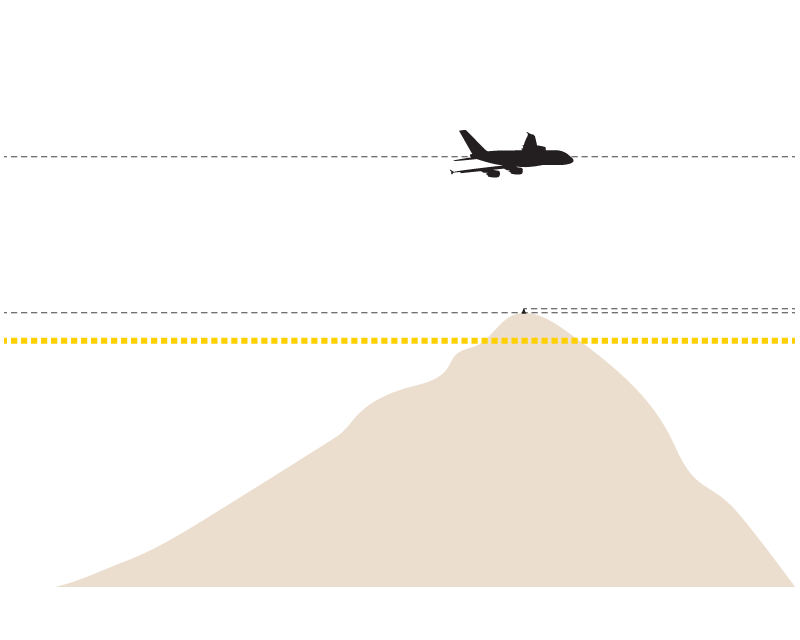
Minimum flight altitude to avoid strict rules flying over firing range: 914m
Broadcast tower: 590m
Castle Peak: 583m
Projected low-flying aborted jet over Danger Zone 5: 526m
What does the government say about Danger Zone 5?
Britain's National Air Traffic Services (NATS), the government's airport consultants, recommended relocating the firing range, known as Danger Zone Five, in 2008. They said the third runway would risk being little used otherwise.
A Civil Aviation Department source said the government remained open to its consultant's warning and that the firing range could be moved before the third runway was completed – but this would mean the PLA having to cede control of a key resource.
"The missed approach procedure has been operating smoothly since its implementation and an effective communication mechanism is also in place with the firing zone and the PLA," the source said. "We are considering all possible options and will take necessary action during detailed procedure design."
However, the department's official response insisted it would comply with UN aviation safety rules when planning the third runway and that Hong Kong's existing two runways managed to operate aborted landings above the danger zone "safely and efficiently at all times".
But the consultants say there is not enough space for planes to safely climb over Castle Peak and the firing range with the third runway in place. If a jet attempted to fly above the firing range, it would need to climb at a minimum gradient of more than 10 per cent, which NATS branded as "operationally unacceptable". Seven per cent is considered the maximum limit.
This combination is the “technical issue” behind the decision to axe the danger zone five flight path.